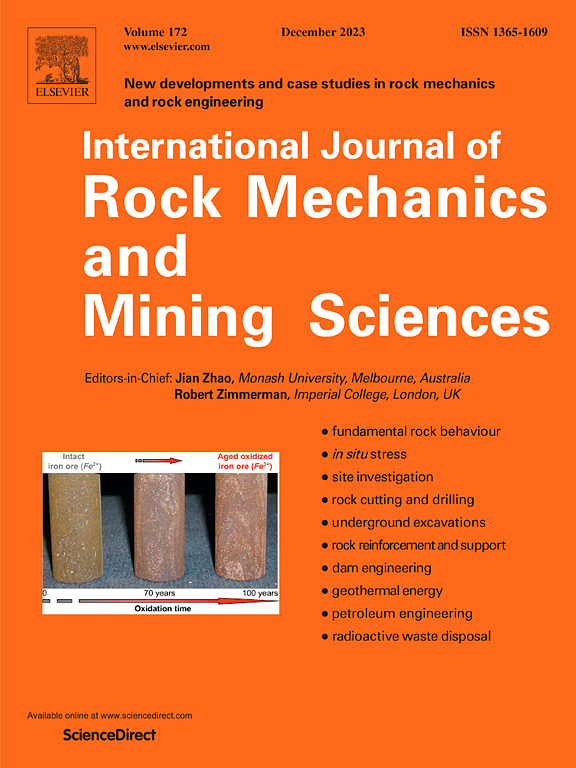Tunnel face rock mass class identification based on multi-domain feature extraction and selection of TBM cutterhead vibration signals
IF 7.5
1区 工程技术
Q1 ENGINEERING, GEOLOGICAL
International Journal of Rock Mechanics and Mining Sciences
Pub Date : 2025-02-26
DOI:10.1016/j.ijrmms.2025.106066
引用次数: 0
Abstract
The rock mass class identification of the tunnel face is a key problem for TBM operating parameters optimization and subsequent tunnel support measures selection. This study presents a rock mass class identification method by monitoring and classifying TBM cutterhead vibration signals. Firstly, vibration signals were collected by a set of cutterhead vibration monitoring system installed on the TBM cutterhead during TBM tunnelling. The corresponding rock mass classification were conducted along the excavated tunnel field investigation. Secondly, time statistics and waveform, power spectrum frequency, nonlinear and time-frequency domain were extracted from the TBM cutterhead vibration signal. 18 features were selected by Boruta-SHAP feature selection method as important feature set. Based on the result analysis of different machine learning models, the XGBoost model was the best model used to identify the rock mass class. Its accuracy was up to 98.79 % on the test set. Finally, the feature sensitivity analysis by SHAP interpretation showed that energy entropy, Imf6e and kurtosis were the most sensitive features for different rock mass classes.
基于多域特征提取和掘进机刀盘振动信号选择的巷道工作面岩体类别识别
巷道工作面岩体等级识别是掘进机运行参数优化和后续巷道支护措施选择的关键问题。提出了一种通过对掘进机刀盘振动信号进行监测和分类的岩体分类方法。首先,通过安装在TBM刀盘上的一套刀盘振动监测系统采集TBM掘进过程中的振动信号。对开挖隧道进行了相应的岩体分类。其次,从掘进机刀盘振动信号中提取时间统计量和波形、功率谱频率、非线性和时频域;采用Boruta-SHAP特征选择方法选择18个特征作为重要特征集。基于不同机器学习模型的结果分析,XGBoost模型是用于岩体类别识别的最佳模型。在测试集上,其准确率高达98.79%。基于SHAP解释的特征敏感性分析表明,能量熵、Imf6e和峰度是不同岩体类型最敏感的特征。
本文章由计算机程序翻译,如有差异,请以英文原文为准。
求助全文
约1分钟内获得全文
求助全文
来源期刊
CiteScore
14.00
自引率
5.60%
发文量
196
审稿时长
18 weeks
期刊介绍:
The International Journal of Rock Mechanics and Mining Sciences focuses on original research, new developments, site measurements, and case studies within the fields of rock mechanics and rock engineering. Serving as an international platform, it showcases high-quality papers addressing rock mechanics and the application of its principles and techniques in mining and civil engineering projects situated on or within rock masses. These projects encompass a wide range, including slopes, open-pit mines, quarries, shafts, tunnels, caverns, underground mines, metro systems, dams, hydro-electric stations, geothermal energy, petroleum engineering, and radioactive waste disposal. The journal welcomes submissions on various topics, with particular interest in theoretical advancements, analytical and numerical methods, rock testing, site investigation, and case studies.

 求助内容:
求助内容: 应助结果提醒方式:
应助结果提醒方式:


